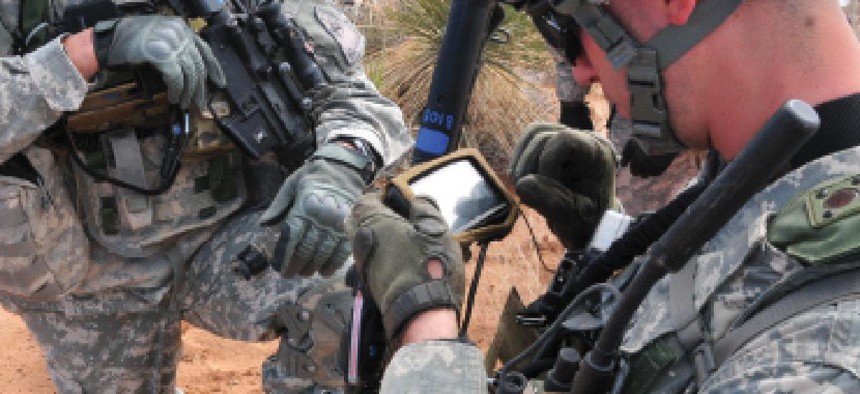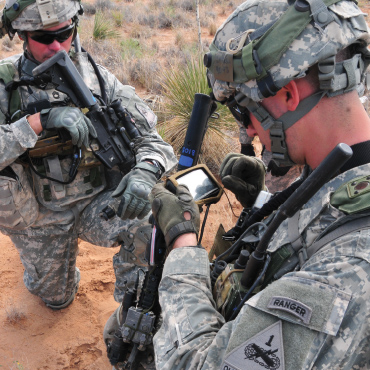House panel hammers Army CIO over request to reprogram 2018 funds

The Army is seeking to realign funds for network modernization, but Congress wants to know what's wrong with the systems it already paid for.

Army CIO Lt. Gen. Bruce Crawford found more than a little resistance as he faced off with the House Armed Services Committee hearing Sept. 27, following a request for nearly a half billion dollars in additional IT spending for fiscal year 2018. And without a detailed plan of how the Army would spend the money, legislators seemed more peeved than convinced.
"This committee was told with the full support of the Army in May -- four months ago -- of the critical need of this program and you're before us in September," said Rep. Michael Turner (R-Ohio) during the hearing's opening remarks. Later he quipped: "We are not an accounting agency."
The Army is looking to reprogram $544 million in spending by shelving several planned FY2018 procurements, including Mid-Tier Network Vehicular Radio legacy Command Post of the Future, as the Warfighter Information Network-Tactical Increment 2. According to Crawford's written testimony, the hope is to apply $413 million to cope with urgent cybersecurity and interoperability issues, and $131 million for better systems acquisition.
Committee members criticized the Army's culture of IT management saying that today's call to reprogram money was too familiar.
Rep. Niki Tsongas (D-Mass.) said the Army's waffling on IT budget needs was not "a new problem" and internal management of its networks "has been challenged for many years."
Despite the criticism, Crawford, who stepped into the CIO role Aug. 1, defended the decision to ask for more funds, saying the Army's battlefield IT backbone and end-user communication hardware, the WIN-T, isn't ready for war conditions and needs to be updated so the Army can fulfill its defense responsibilities.
Crawford said the "realization of the threat" and a new Institute for Defense Analyses study on cyber readiness drove the decision.
"You've got a nuclear adversary that's developing the ability to disrupt our forces," Crawford said, and the Army hadn't fully developed an understanding of adversaries that "not only have electronic warfare capability but a cyber capability," with the ability to combine the two with information operations.
Part of the problem thus far, according Maj. Gen. James J. Mingus, who testified with Crawford, is that the Army has been overly prescriptive and restrictive when asking industry partners for tools.
"We have been way too prescriptive in trying to tell industry what to deliver as opposed to asking industry how to meet the capabilities we need," said Mingus, who is the director of the Army's Mission Command Center of Excellence.
The Army is looking to make its equipment more mobile so soldiers can communicate on the field more like they do as civilians without worrying about whether they're close enough to a transmitter.
Mingus mentioned the 10-year old radio systems that troops are trying to use in the field as one of the systems that could be upgraded.
Crawford backed him up, saying, "the infrastructure needs to sit with the enterprise, not [on the field] with the operator."
Legislators, however, wanted to know what happened to the $6 billion invested in WIN-T so far?
Crawford assured the committee members that the existing technology would still be utilized, but that the Army now realizes the tech it has doesn't fit today's needs.
"Our promise to you is that we will do better," he said. "We will not be abandoning technology… We are asking to halt in FY2018 but we will be fielding WIN-T through FY2021."
A clear plan to modernize, rather than ideas of better tech, is ultimately what the committee wanted to – but didn't – hear.
Rep. Tom O'Halleran (D-Ariz.) called out Crawford for having "ideas" rather than a "plan," and pressed for details.
Crawford conceded that the Army didn't have a detailed plan of how it was going to carry out the modernization, but would provide one in the future.
"What we've laid out for you today, sir, is a recognition that we've got a real problem in our formation in our Army," he said, mentioning the historic absence of unified leadership and IT strategy as issues. "We've got a near-term, fight-tonight problem that we can't get past, and so we've got to fix that."



